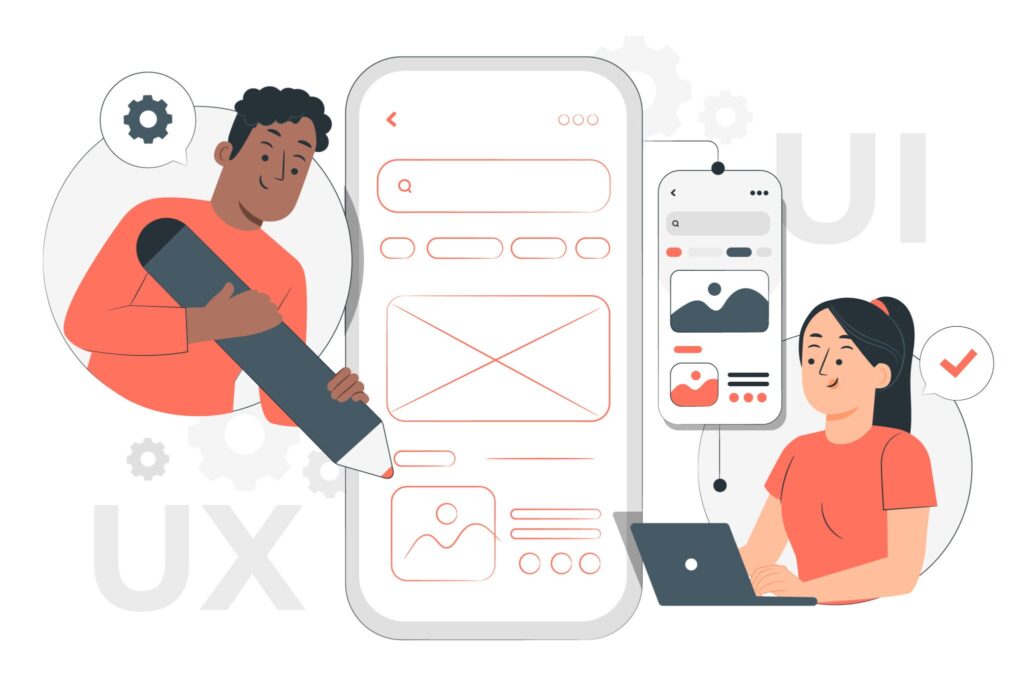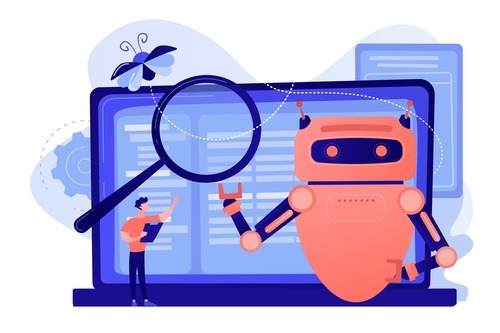Are you frustrated by the ongoing challenges of iOS testing and quality assurance? Are user complaints, security risks, or compatibility issues starting to affect your brand reputation, revenue, or growth potential?
If these concerns sound familiar, you are not alone. You are also in the right place.
Managing iOS testing and quality assurance is not optional. It is a critical requirement for building a reliable and successful iOS application. Addressing these challenges early helps you deliver a stable, secure, and user-friendly product that performs well across the Apple ecosystem.
At Mallow, we bring years of hands-on experience in iOS application development, testing, and quality assurance. Our structured and strategic approach has helped clients overcome common testing challenges and deliver high-quality applications. As a result, our clients benefit from stable apps, improved performance, and user experiences that truly connect with their audience.
By the end of this article, you will gain practical insights into delivering a reliable iOS application with confidence. You will learn how to handle device fragmentation, manage compatibility across multiple iOS versions, and avoid common testing pitfalls. The article will also help you strengthen your testing strategy, improve app performance, and implement quality assurance practices tailored specifically for iOS applications.
The increasing demand for high-quality iOS applications
The iOS application ecosystem is experiencing rapid growth, with users increasingly expecting high-quality applications. Today’s users look for apps that combine innovation with a strong focus on usability and design. Functionality alone is no longer enough. Users now expect smooth performance and a refined user experience.
As iOS devices continue to evolve across iPhone, iPad, Apple Watch, and Apple TV, expectations for app performance and compatibility have risen significantly. Users want applications that work seamlessly across all these devices without compromise.

Apple’s continuous improvements in both hardware and software have raised the bar for application quality. In this highly competitive environment, developers must go beyond meeting basic requirements. To succeed, they need to deliver applications that are intuitive, visually appealing, and carefully crafted to align with user expectations and platform standards.
What are some common challenges encountered in iOS application testing? And what’s the solution?
UI and UX Testing

Challenges
Delivering a seamless and visually appealing user interface across multiple iOS devices requires careful and thorough testing. Differences in screen sizes, resolutions, and orientations can easily lead to layout issues if they are not identified early.
Solutions
To address this, implement responsive design principles so your interface adapts smoothly to different devices. Use testing tools that simulate various screen sizes to detect layout inconsistencies. In addition, conduct usability testing to confirm that the interface remains clear, consistent, and visually balanced across all supported devices.
UI testing should focus on usability and intuitiveness. Review the layout, navigation flow, and visual elements to ensure users can complete essential tasks without confusion. The interface should feel natural and easy to understand from the first interaction.
Responsiveness testing is a key part of iOS quality assurance. Your app should adapt seamlessly across different iPhone and iPad models. Testing on both newer and older devices helps ensure a consistent experience for all users, regardless of the device they use.
Given the wide range of iOS devices and orientations, relying only on manual layout testing can be time-consuming and prone to errors. Automated layout testing tools help validate that the app’s design remains consistent across devices and screen orientations.
As your app evolves and updates are released, automated layout testing also supports efficient regression testing. This ensures that new features or changes do not unintentionally affect the existing layout, helping maintain a high-quality and consistent user experience throughout ongoing development.
Performance Testing

Challenges
Performance issues such as slow load times, freezes, and app crashes can seriously affect user experience and retention. Thorough performance testing under different conditions is essential to ensure that your iOS application runs smoothly and reliably.
Solutions
To address these challenges, implement comprehensive performance testing that simulates real-world scenarios, including varying network conditions. Tools like Xcode Instruments can help profile CPU usage, detect memory leaks, optimise battery consumption, analyse data usage, and identify performance bottlenecks. Regular analysis of these metrics allows teams to improve responsiveness and deliver a faster, more stable application.
A major challenge in iOS testing is continuously monitoring and optimising application performance after release. This is where Application Performance Monitoring (APM) becomes valuable. APM tools such as Smartlook and Firebase Performance Monitoring provide actionable insights into how your app behaves in real usage environments.
These tools help identify issues like slow screen loading, unresponsive UI elements, excessive resource consumption, or unexpected crashes. By continuously tracking performance data, teams can detect anomalies early and understand how performance issues impact user experience.
It is important to actively review alerts and notifications generated by APM tools and address them promptly. Incorporating these insights into upcoming app updates ensures ongoing performance improvements and helps deliver a consistently smooth experience for users.
Security and privacy

Challenges
Protecting user data is a top priority for any iOS application. Strong security measures are essential to maintain user trust, comply with privacy regulations, and prevent data breaches. Identifying vulnerabilities early through thorough testing helps reduce risks and ensures long-term application stability.
Solutions
To strengthen security, secure coding practices should be followed throughout the development lifecycle. Regular security audits and penetration testing help uncover weaknesses that could be exploited by attackers. These proactive measures allow teams to fix issues before they impact users.
Data encryption plays a critical role in safeguarding sensitive information. Implement industry-standard encryption protocols to protect data both during transmission and while stored on devices or servers. Encrypting data at rest and in transit significantly reduces the risk of unauthorised access and data leaks.
Strong user authentication is equally important. Use secure authentication methods such as biometric verification or multi-factor authentication to ensure that only authorised users can access sensitive features within the app. These measures add an extra layer of protection beyond basic login credentials.
Keeping the application and its dependencies up to date is essential for maintaining security. Regular updates and patches help address newly discovered vulnerabilities in the app as well as in third-party libraries or frameworks. Outdated components often become entry points for security attacks.
Conduct frequent code reviews to identify potential security flaws early in the development process. Reviewing code with a security mindset helps prevent common vulnerabilities and improves overall application quality.
If your app interacts with external services or APIs, ensure that all data exchanges are secure. Follow secure API design practices and use trusted protocols such as OAuth for authentication and authorization. This ensures safe communication with third-party services and protects user data throughout the integration process.
Testing Automation

Challenges
Automating iOS tests is essential for improving testing efficiency and consistency. However, automation can be challenging due to scripting complexity and compatibility issues across different testing frameworks and iOS versions.
Solutions
To overcome these challenges, start by selecting the right automation tool that aligns with your application’s needs. Tools such as Appium, LambdaTest, and XCTest are widely used for iOS testing and offer strong support for automated workflows. Choosing the right tool helps simplify test execution and improves long-term maintainability.
Develop a well-defined automation strategy that focuses on repetitive and time-consuming test scenarios. This ensures maximum value from automation while allowing manual testing to focus on exploratory and usability testing. Prioritising stable and frequently used features for automation helps reduce effort and increases reliability.
It is important to regularly update automation scripts as the application evolves. Changes in features, UI, or frameworks can cause scripts to break if they are not maintained. Keeping scripts aligned with current app functionality ensures consistent and dependable test results.
Before automating tests, review the application architecture to ensure it supports testability. Update test cases whenever architectural or functional changes are introduced. A test-friendly architecture reduces maintenance effort and helps maintain a smooth and efficient testing process throughout the application lifecycle.
Manual Testing

Challenges
iOS devices come in many models with different screen sizes and configurations. Testing across all possible combinations is challenging and can lead to compatibility issues if not handled carefully. Manual testing also carries the risk of human error, where critical issues or inconsistencies may be missed. Repetitive testing tasks can cause tester fatigue, reducing accuracy over time. In addition, manual testing requires significant time and effort, which can impact project timelines and increase costs.
Solutions
Start by prioritising testing on the most widely used and representative iOS devices. This approach helps cover the majority of users without testing every possible device combination. Use cloud-based testing platforms such as Testsigma, Kobiton, LambdaTest, or BrowserStack to gain access to a wide range of real devices without additional hardware investment.
Create detailed test plans and structured checklists to reduce the chances of human error. Consistent execution of test cases ensures better coverage and reliability. Introduce test automation for repetitive and time-consuming scenarios so testers can focus on exploratory testing and high-risk areas of the application.
Invest in continuous training for testers to keep them updated on iOS platform changes, testing best practices, and new tools. Well-informed testers work more efficiently and deliver higher-quality results, improving the overall effectiveness of the testing process.
User Feedback and Beta Testing
Challenges
Gathering meaningful user feedback and running effective beta testing are essential for identifying issues early and improving overall app quality. Real user input helps uncover problems that may not appear during internal testing and provides valuable insights into real-world usage.
Solutions
Implement in-app feedback mechanisms that make it easy for users to share their thoughts, report issues, and suggest improvements. This encourages continuous feedback directly from within the app.
Use beta testing platforms to distribute test builds to a diverse group of users. A varied user base helps identify device-specific issues, usability gaps, and performance concerns across different environments.
Actively engage with user communities by responding to feedback and addressing concerns quickly. Use these insights to make iterative improvements, ensuring the app evolves based on real user needs and delivers a high-quality, user-centric experience.
Device Fragmentation
Challenges
Testing across multiple device models, screen sizes, and hardware configurations can be time-consuming and resource-intensive. Achieving full coverage using only physical devices is often impractical, especially as new models are released regularly.

Solutions
To address this challenge, create a strategic device matrix that prioritises the most commonly used iPhone and iPad models. This approach ensures maximum user coverage while keeping testing efforts efficient.
Complement real device testing with cloud-based testing platforms to expand coverage without increasing hardware costs. Tools such as BrowserStack, Appium, Apptim, and TestSigma allow you to test across a wide range of real devices and OS versions. Automation further streamlines the process, helping ensure your application performs reliably across the diverse iOS device landscape.
Operating System Versions

Challenges
The wide range of iOS versions currently in use creates a significant compatibility challenge. Ensuring that an application performs smoothly across older and newer iOS versions requires careful and consistent testing. Differences in system behaviour, deprecated APIs, and new features can affect app stability and user experience if not addressed early.
Solutions
Begin by prioritizing testing on the latest iOS version, as most users tend to upgrade quickly. This ensures alignment with current user expectations and platform standards. At the same time, test on a selected set of older iOS versions that still have a significant user base.
Use simulators or virtual machines to test across multiple iOS versions in parallel. This approach saves time and allows teams to identify version-specific issues efficiently. Keep all testing environments up to date so they reflect the latest iOS releases and configurations.
Apple provides early access to upcoming iOS versions through its beta programs. Development teams should actively participate in these programs and test their applications in beta environments. This proactive testing helps identify compatibility issues early and ensures the app is ready for release when the new iOS version becomes publicly available. By doing so, developers can deliver a stable, reliable, and user-friendly experience across all supported iOS versions.
Compliance with Apple
Challenges
Adhering to Apple’s strict guidelines and App Store requirements is essential for a successful app release. Failure to comply can lead to app rejection, delayed launches, and additional development effort. These setbacks can affect timelines, budgets, and overall business goals.
Solutions
Stay up to date with Apple’s App Store guidelines by regularly reviewing official documentation and updates shared by Apple. Since guidelines evolve frequently, continuous monitoring helps prevent unexpected compliance issues during submission.
Conduct thorough pre-submission testing to ensure your application meets all technical, design, performance, and security requirements. This includes checking user interface standards, privacy policies, permission usage, and overall app stability.
Make use of Apple’s official resources and developer support channels to clarify any compliance-related concerns. These tools can help you navigate the App Store review process more confidently and reduce the chances of rejection. For deeper clarity, refer directly to Apple’s published guidelines, which provide detailed explanations of compliance expectations and best practices.
The Role of Continuous Integration (CI) and Continuous Delivery (CD)
Continuous Integration (CI)
In the iOS development ecosystem, teams must manage multiple devices, screen sizes, and operating system versions. This complexity makes seamless integration and consistent testing essential. Continuous Integration (CI) helps address this challenge by automatically integrating code changes into a shared repository and triggering builds and tests.
For iOS applications, CI ensures that every code change is quickly validated across different devices and configurations. This shortens the feedback cycle and helps developers identify and fix issues early in the development process. Each integration triggers automated checks such as unit tests, UI tests, and UX validations. This continuous and automated approach improves test coverage, reduces defects, and supports the delivery of high-quality iOS applications.
Continuous Delivery (CD)
Continuous Delivery builds on CI by automating the deployment and release process. In iOS application testing, CD ensures that once code changes pass all required tests, they move smoothly toward release without manual intervention.
After successful validation in the CI pipeline, CD automates the deployment workflow, ensuring the application is packaged and delivered in a consistent and reliable manner. This reduces the risk of human error and supports predictable release cycles.
CD also enables advanced release strategies such as staged rollouts, canary releases, and A/B testing. These approaches allow teams to observe real-world user behavior and performance before fully rolling out changes. In the fast-paced iOS ecosystem, where frequent updates and user experience are critical, CD ensures that testing efforts directly translate into stable releases and a positive experience for end users.
Best practices for iOS testing and quality assurance
Below mentioned is a checklist which will be your go-to guide on implementing the best practices for testing your iOS application:
✅ Ensure testing covers various devices, screen sizes, and OS versions. Include unit tests, integration tests, and UI tests for thorough coverage.
✅ Implement automated testing for efficiency and repeatability. Utilise frameworks like XCTest or XCUITest for iOS automation.
✅ Prioritise testing on the most popular and relevant iOS devices. Leverage cloud-based testing services for broader device coverage.
✅ Implement secure coding practices throughout development. Conduct regular security audits and penetration testing.
✅ Conduct performance testing under various network conditions.
✅ Integrate APM tools, attend the alerts which includes slowness, screen freeze or screen rendering issues and release the next version with those issues attended.
✅ Ensure responsive design principles for adaptability. Conduct usability testing to validate a seamless user experience.
✅ Integrate analytics tools for user behaviour tracking. Set up monitoring for performance metrics and error tracking.
✅ Stay informed about and adhere to Apple’s guidelines. Conduct pre-submission testing to ensure compliance.
✅ Implement in-app feedback mechanisms for user input. Actively engage with user communities for insights and improvements.
✅ Integrate version control with CI for seamless collaboration.
What quality testing methods can you follow for your application?
By now, you’ve gained a comprehensive understanding of the significant challenges inherent in testing iOS applications and the strategic approaches to navigate through them seamlessly.
For ensuring the utmost quality of your iOS applications, it is essential for you to look into a detailed exploration of quality testing methodologies, as highlighted in our latest article on quality testing methods.
Discover insights, best practices, strategical recommendations and testing approaches that will empower you to implement robust testing methodologies, ensuring your application not only meets but exceeds the expectations of your users.
Still, feeling struck or wondering where to start? Feel free to reach out to us.
Your queries, our answers
Mobile application development involves creating software applications designed to run on mobile devices like smartphones and tablets. These apps can be native (built specifically for iOS or Android), cross-platform (designed to work on multiple platforms), or hybrid (combining elements of both).
Our mobile app development process includes the following stages: requirement gathering and analysis, design and prototyping, development and coding, testing and quality assurance, deployment, and post-launch support. Each stage is crucial to delivering a high-quality application.
To gain deeper insights into the experience of working on a mobile project with Mallow, explore more details here.
The choice between native and cross-platform development depends on your project’s goals, budget, and target audience. Native apps offer better performance and a more tailored user experience, while cross-platform apps allow for faster development and lower costs by using a single codebase for multiple platforms. For a detailed comparison of Native vs. Hybrid development, explore our comprehensive analysis to help you make an informed choice.
Mallow develops mobile apps for iOS, Android, and cross-platform solutions. We use the latest technologies and frameworks to ensure your app performs optimally on the platforms that matter most to your users.
Choosing the right features for your mobile app depends on understanding your target audience, business goals, and budget. We work closely with you to prioritize features that will provide the most value to your users and align with your business objectives.
At Mallow, we offer ongoing app maintenance and updates as part of our post-launch services. This includes regular updates to improve performance, add new features, and ensure compatibility with the latest operating systems. For more details, get in touch with our team.
Yes, Mallow assists with the entire app store submission process, including meeting the guidelines for Apple’s App Store and Google Play. We ensure your app is ready for submission and provide support to help it get approved.
Mallow uses a variety of technologies and frameworks for mobile app development, including Swift and Objective-C for iOS, Kotlin and Java for Android, and React Native and Flutter for cross-platform development. Our technology choices are driven by the specific needs of your project.
Our testing process includes functional testing, performance testing, security testing, usability testing, and compatibility testing across different devices and operating systems. We ensure your app is bug-free and performs optimally before it goes live.
The cost of developing a mobile app depends on several factors, including the app’s complexity, features, platform (iOS, Android, or both), and the development team’s expertise. Costs can range from $10,000 to $150,000 or more. To know more, check out how much it costs to work on a mobile project with us.
The development timeline for a mobile app varies depending on the complexity of the project. A basic app may take 2-4 months to develop, while a more complex app with advanced features can take 6-12 months or longer.
Choosing the right features for your mobile app depends on understanding your target audience, business goals, and budget. We work closely with you to prioritize features that will provide the most value to your users and align with your business objectives.
Yes, Mallow offers comprehensive post-launch support, including monitoring, updates, bug fixes, and enhancements. We ensure your app remains up-to-date and continues to perform well after it’s launched.
A mobile app can enhance customer engagement, increase brand visibility, provide better service through personalized experiences, and create new revenue streams. It also allows you to reach a broader audience by making your services more accessible on mobile devices.
Getting started with Mallow is easy! Simply reach out to us to discuss your project. We’ll work with you to understand your goals, define your requirements, and create a development plan that meets your needs. Let’s bring your mobile app idea to life!.
Security is a top priority at Mallow. We implement advanced security measures, including encryption, secure authentication, and regular security audits, to protect your app from potential threats and ensure data integrity.
To learn more about how we handle and implement these security measures, check out more details here.
Author
Yogesh Murugesh
Yogesh is an accomplished Senior Technical Lead at Mallow, boasting over 11 years of invaluable expertise in the realm of application development. With an extensive background spanning diverse domains, he has consistently delivered applications of the highest calibre. Yogesh's commitment to quality and excellence shines through in every project he undertakes. His career journey is marked by a proven track record of successfully crafting applications that not only meet but often exceed industry standards. His ability to navigate through various domains showcases his adaptability and keen problem-solving skills. Yogesh's contributions have consistently played a pivotal role in driving technological innovation and advancement within his field. Beyond his professional pursuits, Yogesh finds solace and joy in various activities. An ardent cricket enthusiast, he embraces the team spirit and strategic thinking that the sport demands. During leisure moments, he indulges in watching movies, allowing himself to be captivated by different narratives and genres. Moreover, Yogesh cherishes quality time with his child, relishing the role of a devoted parent.



